Teach Climate Change Through Positive Action
Originally published 8/16/15. Links and some content updated 7/09/18 by the editors. Learn more about the updated 2020 edition at Nomad Press.
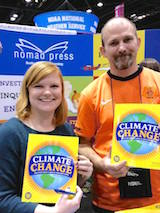 By Erin Twamley and Joshua Sneideman
By Erin Twamley and Joshua Sneideman
A new school year is beginning, and many teachers might find themselves teaching about climate change and energy conservation in your classroom. We all know that we want to avoid fear tactics and focus instead on giving students the knowledge and confidence to make a positive impact on the environment.
Here are seven ways you can encourage students to begin to think globally about climate change and act locally to be part of the solution.
1. Collect Cool Concepts to help to tell the story of climate change. From the scientist who discovered oxygen to the marine biologists and oceanographers who study how climate impacts the ocean ecosystem, there are many good stories that can help put the study of climate change into perspective. Here are some cool concepts to help your class get started:
► Did you know the first solar house in the United States was designed and built by two women? Find out who they are, where the first solar house was built, and how their work contributed to defeating misconceptions about solar. Have students create a mini presentation.
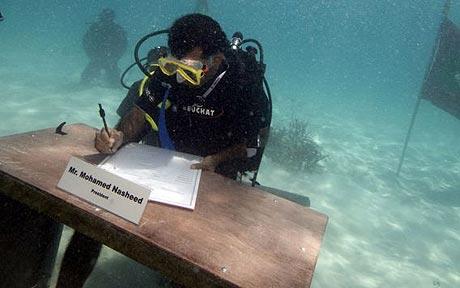
► Students can also search for pictures of phytoplankton “bloom” taken from space. Make a concept map that showcases how phytoplankton are vital to the ocean food chain and how they influence our global climate (NASA photo).
2. Tune in to climate messages on social media and join the climate conversation. Students need to feel their actions and efforts are connected to a larger activist community. One way to do this is by following and communicating through the Twitter hashtag #ActOnClimate where many climate experts share information.
► To get started, have students take photos of individuals in their community doing climate friendly acts and make a class or school Pinterest board.
► Have a class competition to see which classroom can have every student complete the US Department of Energy’s Energy Action List activities in one month and learn “10 Simple Ways to Use Energy Wisely.” Post the winners on Facebook with the hashtag #ActOnClimate.
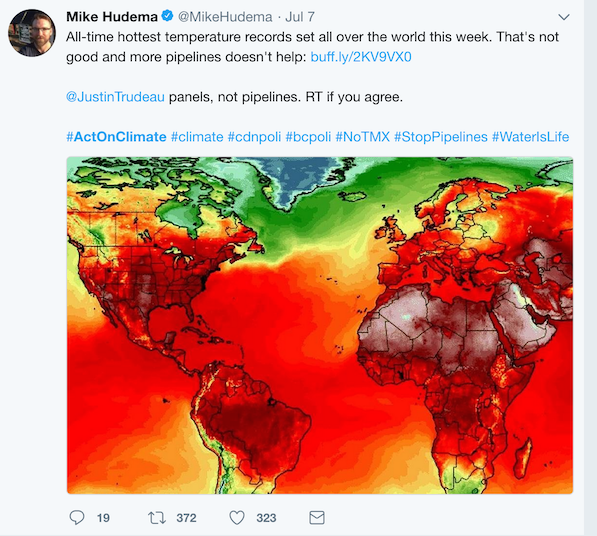
from #ActOnClimate twitter feed – 7/7/18
► Create a school “Green Team” of parents, teachers and students who care about climate and can contribute to a shared blog or a newsletter.
3. Investigate climate change. Use digital resources like quizzes, games and online forums to learn about climate change.
► NASA’s Climate Kids is a good place to get started. It helps to bring introductory concepts like climate and weather patterns into your classroom.
► Want students to understand the link between climate and the environment? Check out Recycle City, an interactive site for kids developed by the Environmental Protection Agency. The DumpTown game lets students explore how homes and businesses can recycle, reuse or reduce waste through the efforts of government and citizens.
► As students learn more about the impact of various elements (heavy metals, gases, acids, etc.), take advantage of the virtual interactive Periodic Table to learn more about the elemental players.
4. Involve students in Making. Find hands-on activities that you can do right in your classroom to help students understand climate science. There are many free energy education and climate resources. To help you get started:
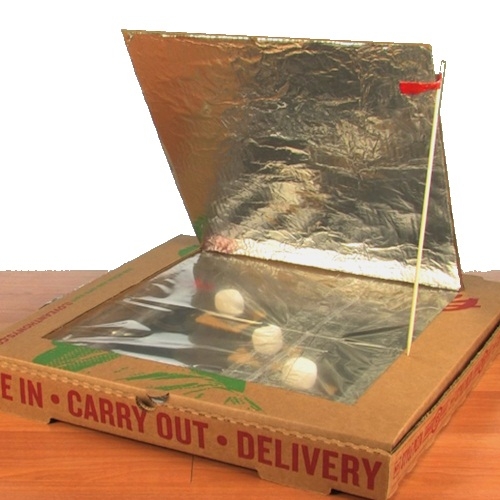
► Find free peer-reviewed lessons on climate and energy at CLEAN, the Climate Literacy and Energy Awareness Network.
► Tap into the free teacher guides and student energy conservation activities available from the National Energy Education Development (NEED) Project.
5. Energy conservation begins at school. Students can ask the principal, other teachers, and school board members to help green your school. From recycling programs to changing lightbulbs and planting trees, your students can lead the way in helping with climate change solutions. Here are some tips and programs to get started:
► Have your class create your own project or join a project for the next Green Apple Day of Service. Projects are dedicated to creating healthy learning environments. This could include cleaning up garbage around your school or investigating nearby environmental problems.
► Have your class join the Billion Acts of Green movement by having your school make a pledge for an activity, program or project for Earth Day. One idea is to get 10 free trees from the Arbor Foundation and plant them in your schoolyard.
► Create a garden at your school. Find resources and tips from US Department of Agriculture. Once your garden is ready, register it as a People’s Garden, and your garden will be displayed on the People’s Garden Map to showcase your efforts.
6. Learn about the technologies of renewable energy. Technology is important to our future and renewable energy is helping us to advance. Teach your students about solar, biomass, geothermal and electric vehicles that are all demonstrating how we can power our lives with clean energy.
► Use the Department of Energy’s Energy 101 videos to introduce renewable technology.
► And use the Women@Energy series to learn about the research of scientists and engineers at the Department of Energy.
7. Excite youth by telling them about renewable energy inventions. From the solar bike path in the Netherlands to solar powered trash bins, renewable energy inventions are everywhere these days. Some of these inventions are even designed and built by youth.
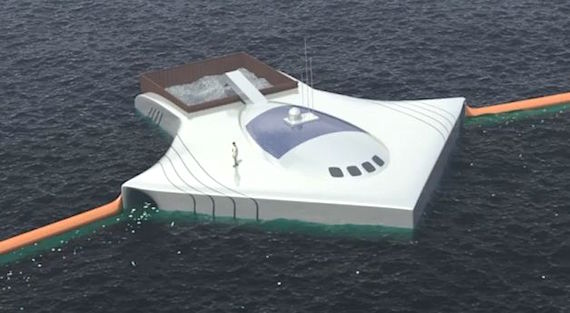
► Hear the power of a voice: the girl who silenced the World for 5 minutes was 12 years old when she first spoke at the Rio Earth Summit.
► Find out more about the annual national Young Scientist Challenge and search for projects that impact climate change.
All of these stories and inventions will help your students think about the power, knowledge and ideas they have that can help make the world a greener, safer, and more sustainable place to live.
READ A REVIEW of Climate Change, here at MiddleWeb.
Image credit: Solar pizza oven – SteveSpanglerScience.com
__________________________
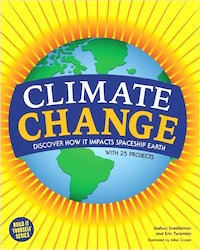

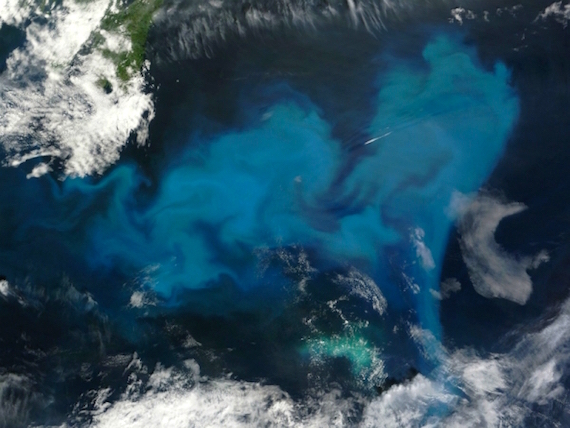
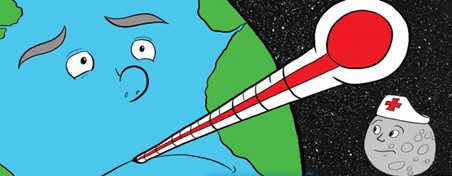
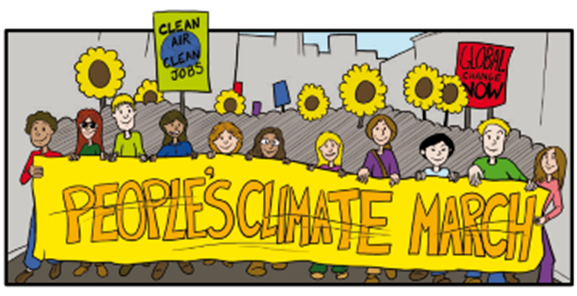



































Instead of just brainwashing school children, let’s teach them about Earth’s Natural History so they are able to understand the actual scientific background of our weather.
For instance; when confronted with the horrible fact that sea levels are rising about 7-12 inches every century, instead of being told that it is all the fault of humans, they can ask “what about the 420 FEET of sea level rise since the end of the last ice age?” When they learn the real facts they won’t be so quick to assume that every little problem is the fault of humans.
Alan, the term is Eustacy for global sea level change and yes you are correct that it occurs on much larger scales. Those of course were in the geologic past. As a geologist myself I am well aware of the geologic record of world wide sea level change, thousands of times in Earth’s history. My knowledge of Earth’s history in no way negates the fact that humans are altering the planet. In fact it hightens my awareness. For earth’s changes in the geologic record are generally more gradual. What we are seeing is happening faster than our records have evidence of. In hundreds of years, not tens of thousands, we are forcing our atmosphere with carbon dioxide.
That being said, it should not be considered brain washing to point out the raw data. The sheer magnitude of our emissions. The clear indicators from around the globe. As educators we should not be putting ourselves in a position to make decisions for students; rather, we should be introducing them to the data and letting them decide in an educated manner. The data is what we present. Data from coral, data from tree rings, data from mud cores.
We emit trillions of tons, trillions of tons of carbon dioxide into the atmosphere. Do you not believe this has an impact? The deeper you dig, the more you see that what is funding the anti-science movement is vested coal and oil and natural gas interests. So you too should not be brainwashed by those who have billions of dollars at stake if fossil fuels are left underground. Use earth science and our understanding of principles of geology to understand the magnitude of our collective impact.
How about introducing them to real science? For example; collecting water temperature, air temperature, dissolved O2, pH and turbidity data from the field. Collecting and characterizing macro inveterabrates (insects) to evaluate water quality. Collecting and identifying riparian zone plants. Measuring stream flow and bottom morphology.
I’ve been involved in science education as a volunteer mentor for almost 20 years. We have had students from grades 1 – 12 come through our programs and have seen real results in improved testing scores in math and science. And best of all, we have done it in a manner that allows the students to have fun and get excited about science.
Exactly how is doing Internet searches going to improve a student’s science skill set, let alone their math skills? Particularly when you have them researching things like politicians pulling publicity stunts (underwater cabinet meeting) or using as reference material a website from the most post modern science facilitator in the federal government (EPA).
Expose your kids to real science and they develop the skill set to evaluate and make up their own minds.
Tim, your comments are appreciated. It is exactly our hope that educators seek out classic outdoor education strategies to tie in with our book. The North American Association for Environmental Education is a great resource for such activities. “No Child Left Inside.” Right? We need to combat nature deficit disorder while also educating on the science of climate change.
I agree there is nothing better than macro invertebrate stream testing for water quality. Agreed. We will include your ideas in any future blogs and our 2nd edition of our book, which has over 20 laboratory type activities that we designed for readers to be able to do with families in the home. For that reason our labs tend towards the basic science side.
As related to links to resources, I see your point but we need to know where to turn for reliable data and information, not misinformation. I believe in the resources listed. Have you checked out http://www.climate.gov? You might find it to be a wealth of great teaching resources. We do feel it is important for educators and students alike to be given direct links to reputable sources.
Tim: That’s the whole point. The designers of this curriculum do NOT want students to think for themselves. IF critical thinking was taught in American schools, there would be legions of climate skeptics. These students would ascertain that the science is thin and that there is no scientific proof that human emissions of CO2 is causing a profound change in the globe’s climate. [Editor’s note: read more about meteorologist Bohnak’s views here.]
Karl: You seem to contradict yourself here. Your call for critical thinking is spot on. That is the job of all educators. I know. I’ve taught for 10 years in middle school. But you say if critical thinking were taught there would be legions of skeptics. So you want critical thinking but only if it leads to climate skepticism? See how I am confused by your stance?
Your argument would be much stronger if you said teach critical thinking. Let the students decide. Which, from my 10-year experience as an educator, is exactly what the great majority of teachers do. I assume you have canvassed teachers to see if they teach critical thinking. Or are you rather just jumping on the bandwagon and bashing teachers without having done your own critical investigation of how teachers teach?
If we go on the assumption that teachers are professionals, just like you, and do their best, just like you, to do a good job, then we would have to assume they are teaching critical thinking. Then we would also have to deduct that the reason there are not legions of skeptics is because their critical minds have made a decision.
What most teachers don’t do is fall victim to an anti-science movement funded by coal brothers. I would be happy to see your evidence that the trillions of tons of CO2 is not causing ocean acidification, not causing increased ocean temperatures, not accelerating glacial melt in 90% of global glaciers, and is NOT causing global warming. Can’t wait to see your evidence.
To Josh- I now see how difficult it is to get info on climate change out there! Best of luck!
Indeed